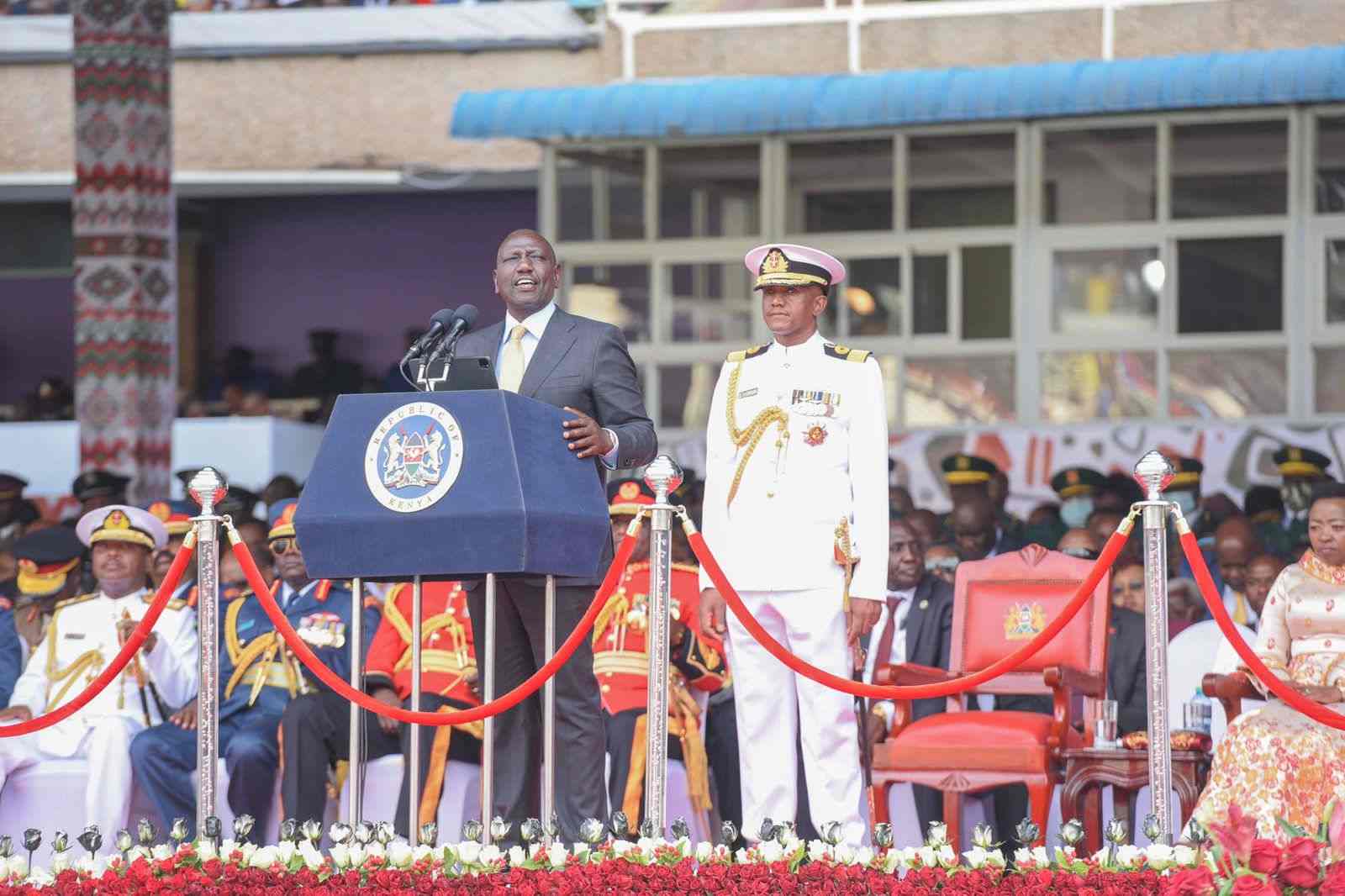As dusk fell on June 25, 2025, Kenya’s streets bore witness to another chapter of defiance—the first anniversary of last year’s tragic protests.
Tens of thousands of Kenyans marched to honour lives lost, demand justice for police brutality, and voice grievances over economic hardships, just like on June 25, 2024.
What began as peaceful protests against the controversial Finance Bill tragically turned deadly when police deployed live bullets, tear gas, and water cannons. Over 60 lives were lost, hundreds were injured, and many were abducted or remain missing.
Now, as the night deepened on June 25, 2025, the outcome was bitterly familiar: street confrontations, silenced media, and mounting calls for accountability.
A Nationwide Stand For Justice
In Nairobi, Mombasa, and at least 23 other counties, people gathered with placards and Kenyan flags, seeking to remember victims and demand accountability.
Roads were brought to a standstill near key government sites, including Parliament and the State House, by razor-wire cordons and police barricades. Transport into the city centre was severely restricted, forcing many to walk long distances before joining the march.
Despite increased security, protests evolved from peaceful vigils into violent confrontations. The Independent Policing Oversight Authority (IPOA) reported use of excessive and varied force by police officers, including live ammunition, tear gas, batons, and water cannons. Moreover, some officers concealed their identities, contrary to the law.
Protesters, in turn, threw stones and other objects in defiance. Fires lit along street corners served as both beacons and burning symbols of rage. As dusk fell, the conflict took on familiar shapes: authority clashing with resistance, grief unbottled, and frustration laid bare.
One of the protesters on the streets of Nairobi, Mohammed, spoke to the BBC about why he had joined the June 25th demonstrations, a sentiment that echoed across the crowd as chants of “Ruto must go!” and “Wan tam” filled the air. His words captured the raw frustration and fear felt by many:
“We have our rights as civilians and as citizens of Kenya. We want the government to stop extrajudicial killing. And we want the government to work together with us. These guys have been killing our cousins. If you try to protest, these people just come and try to shoot. They shoot us, actually, with live bullets. Not rubber bullets.”
Media Blackout and Digital Shutdown
As the protests gained momentum, the Communications Authority (CA) ordered television and radio stations to halt live coverage. Simultaneously, internet access was throttled, and Telegram services were blocked nationwide.
Civil society swiftly condemned these moves as unconstitutional and dangerous. Faith Odhiambo, president of the Law Society of Kenya, labelled the CA’s directive as “an absolute nullity in law,” arguing that the order violated fundamental rights.
A coalition of digital rights organisations pointed out that the shutdown infringed upon freedoms of expression, assembly, media, and access to information, rights safeguarded by Articles 33 to 37 of the Kenyan Constitution.
The Africa Editors Forum (TAEF) described the blackout as a threat to democracy, warning that blocking the media and throttling digital access fuels misinformation and erodes public trust.
They stressed that only the Media Council, not the CA, has the legal authority to regulate broadcast content, making the blackout “a chilling act of censorship.”
The Risks of Suppression
Censoring the media during protests can be more than inconvenient; it can be dangerous. Open communication channels allow people to report arrests, share medical updates, and seek help.
Cutting off these systems often turns chaos into confusion. Instead of de-escalating, it leaves citizens in the dark, emotionally and physically.
By stifling information, suppressors risk eroding trust in institutions and fostering suspicion. A blackout can escalate unrest, as rumours fill the gaps of absent facts.
The aftermath of the June 25th protests
Casualties and Medical Toll
Media and rights groups estimate that at least eight protesters lost their lives today, some of them being students.
Close to 400 were treated by medics, with 83 patients referred for advanced care and eight confirmed to have injuries from live ammunition, including both bullet and rubber pellet wounds. Three police officers were also injured during the clashes.
The Law Society of Kenya, the Police Reforms Working Group, and the Kenya Medical Association jointly issued statements expressing deep sorrow for the losses and urging that justice not be delayed.
While these figures offer a glimpse into the devastation, the final toll may yet rise as investigations and hospital reports conclude.
Moreover, IPOA reported that at least 61 suspected protestors have been arrested so far.
Looting Amid Protest
However, as thousands took to the streets, some individuals hijacked the moment for personal gain. In cities like Nakuru, Nairobi, and Kisumu, the protests quickly became a double-edged sword, one side filled with genuine calls for justice, the other marred by chaos and criminality.
Disturbing footage surfaced of groups of individuals breaking into shops, stealing electronics, food items, and other goods. Streetlights were vandalised. Advertising signs were torn down. Metal frames and infrastructure were ripped from the ground.
Business owners woke up to the devastating aftermath: shattered glass, empty shelves, and a sense of betrayal. In Nairobi’s CBD, some traders broke down in tears, watching years of effort and investment vanish in a few violent minutes.
Several online commentators were quick to condemn the looting, insisting that true Gen Z protest culture stands for nonviolence, creativity, and moral clarity, not vandalism or theft.
The Impact on Small Businesses and Public Trust
While high-level corruption and state brutality are often the targets of protest, it’s important to remember who suffers when protests turn violent: the mama mboga selling vegetables at the corner.
The young man is running a tech repair shop in town. The family-owned store is barely surviving Kenya’s tough economy.
Many of these small business owners had nothing to do with the government policies that angered protesters. Yet they bore the brunt of a hijacked movement. In destroying and stealing from them, looters attacked the very people they claimed to stand for.
Roots of the movement
While protesters took to the streets on June 25 to mark last year’s unrest, the anger this time ran deeper. The death of 31-year-old blogger Albert Ojwang in police custody, on June 8, further inflamed public sentiment.
Police had arrested him over allegations of defamation. His death prompted murder charges against six officers, three of whom were in the force. They have denied the accusations.
Before that, protesters were confronted by a gang of motorbike-riding individuals, ‘goons,’ who used whips and clubs.
Witnesses and activists accuse them of working in tandem with the police to intimidate demonstrators.
Kenya’s Economic Growth Faces Global Risks, Domestic Pressures
Calls for Change
In response to the protests and the suppression, a unified call has emerged across Kenya’s civic space:
- Fully restore internet access and unblock Telegram
- Reverse the media blackout and comply with judicial directives
- Encourage media houses to resist unlawful censorship
- Open channels for constructive dialogue between the government, civil society, and youth leaders
- Protect digital rights and ensure policy transparency
A Protest Is More Than a Moment—It’s a Message
While the above calls are rightfully directed at leaders and those in power, June 25th also reminded us that how we show up is just as important as why we show up.
A movement rooted in justice must walk in discipline. A call for accountability must be matched with integrity. If the goal is change, then we must reflect it in our conduct, in our values, and in the spaces we occupy.
Kenya is at a critical turning point. And how we channel our anger, our grief, and our hope will define what comes next.




